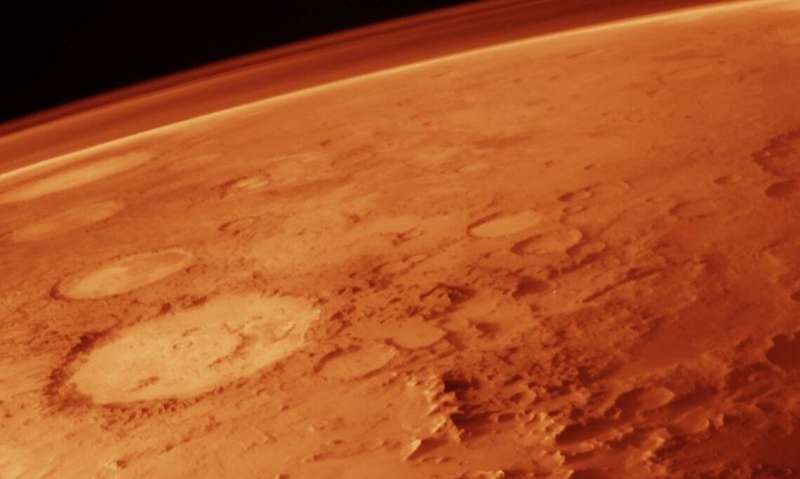June 29, 2021 report
Glauconitic-like clay found on Mars suggests the planet once had habitable conditions

A team of researchers from Spain, France and the U.S. has found evidence of a glauconitic-like clay on Mars that suggests the planet once had habitable conditions. In their paper published in the journal Nature Astronomy, the group describes their study of clay minerals extracted from Gale Crater by Curiosity rover back in 2016 and what they found.
Back in 2016, NASA's Curiosity rover drilled into the Martian surface inside of Gale Crater. The rover then extracted samples of the clay minerals and used its instruments to analyze the material. In this new effort, the researchers have taken a close look at the results of the analysis and found that it very closely resembles glauconitic clays here on Earth.
Glauconite is an iron potassium phyllosilicate mineral. It is almost always found as ovoid shapes in sediment beds, carbonates and sandstones—formation requires stable conditions over a long period. This is what makes the discovery of a similar clay on Mars so exciting—it suggests that it likely formed under stable conditions for a long time, perhaps millions of years. And that suggests that for at least one part of Mars, conditions were, to some extent, suitable for life over millions of years.
Prior research has shown that Gale Crater was once filled with water, forming a lake that lasted for several million years approximately 3.5 billion years ago. The researchers believe that during that time period, Mars had a much thicker atmosphere conducive to persistent surface water. The glauconitic-like clay found by Curiosity also suggests that temperatures during that period would have averaged -3 to 15 degrees Celsius and that the pH of the water in the crater would have been neutral, both positive signs for the existence of life. The researchers note that their findings are not evidence of life on Mars, but suggest that there was a time during which conditions on the surface were favorable for its presence.
More information: Elisabeth Losa-Adams et al, Long-lasting habitable periods in Gale crater constrained by glauconitic clays, Nature Astronomy (2021). DOI: 10.1038/s41550-021-01397-x
Journal information: Nature Astronomy
© 2021 Science X Network





















